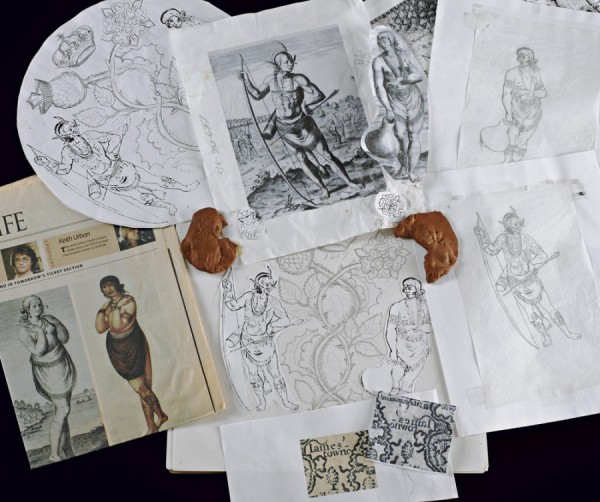
Source material, conceptual renderings, and clay models for Queen Elizabeth’s 2007 commemorative gift. (Courtesy, Michelle Erickson; photos, Gavin Ashworth, unless otherwise noted.)
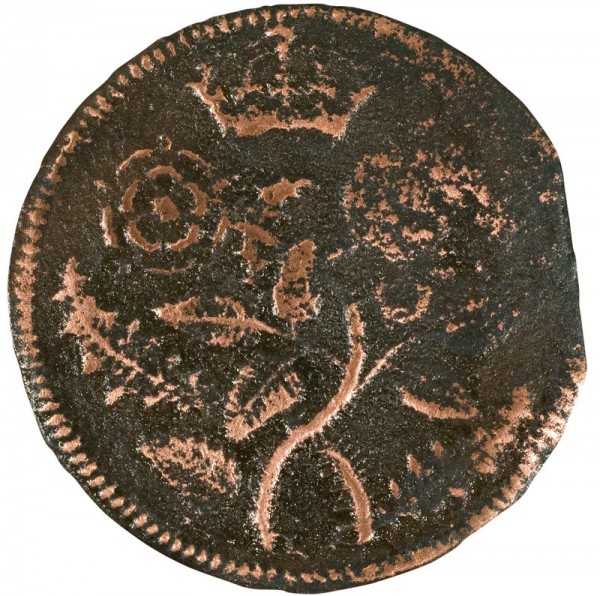
Token, London, ca. 1603–1610. Copper alloy. D. 1 1/8". (Courtesy, Jamestown Rediscovery, Association for the Preservation of Virginia Antiquities.)
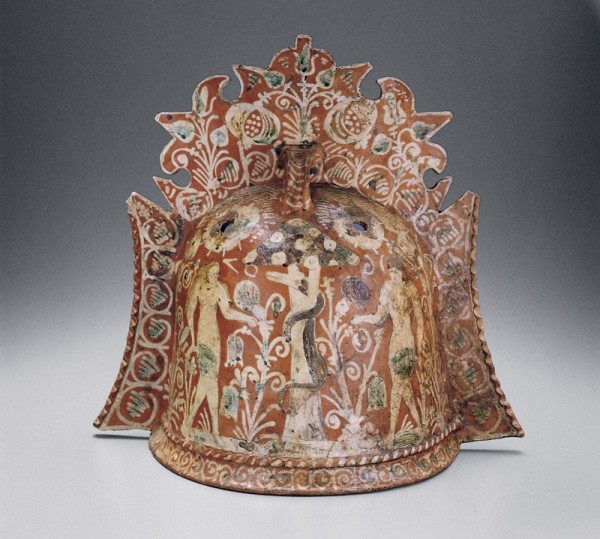
Curfew (firecover), The Netherlands, 1607. Slipware. H. 15 5/8". (Private collection.) These elaborately decorated slipware devices were used to cover smoldering embers on Dutch hearths.
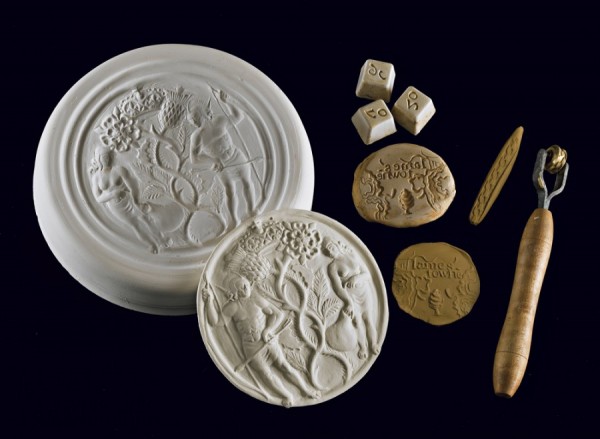
Maquette and related hand-carved sprig molds and roulette wheel. D. of mold 8 1/4". (Courtesy, Michelle Erickson.) This smaller prototype helped refine the larger medallion. Note the smaller molds for the dates and the “Iames towne” lettering. The wood-handled brass roulette was used to emboss the rim of the medallion, a sample of which is shown in raw clay.
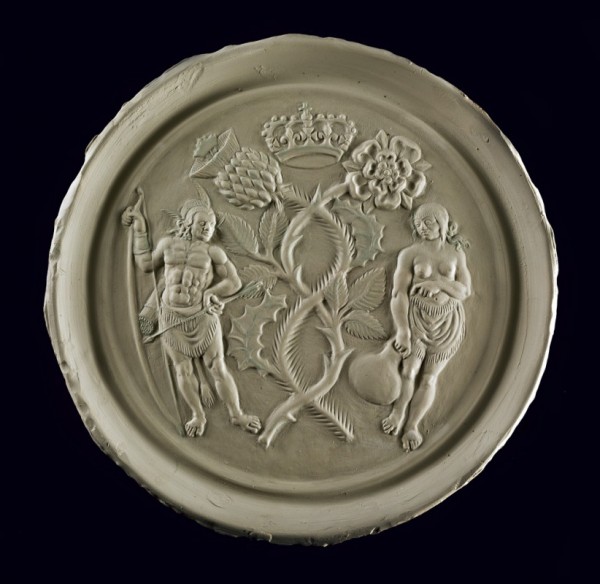
Original clay model, Michelle Erickson, Virginia, 2006. Porcelain clay. D. 14".
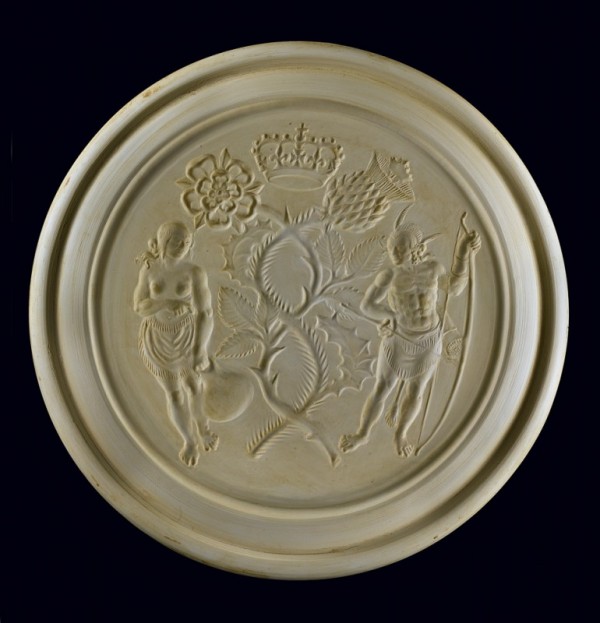
Plaster mold, Michelle Erickson, Virginia, 2006. D. 15 3/4".
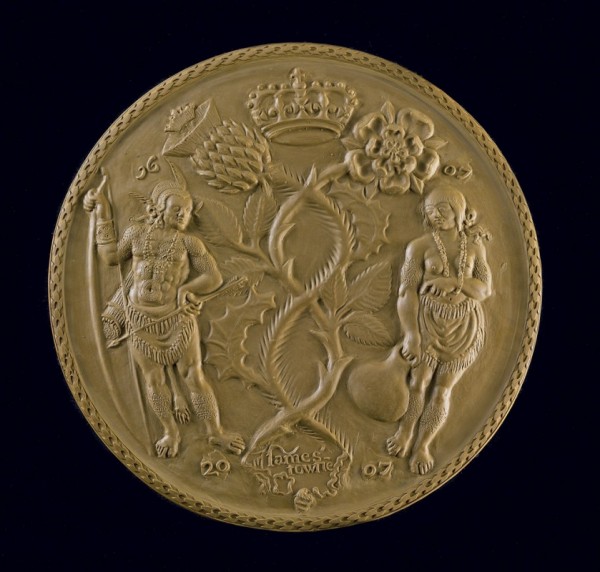
Raw clay medallion, Michelle Erickson, Virginia, 2007. D. 12". The medallion was made with indigenous Virginia clay.
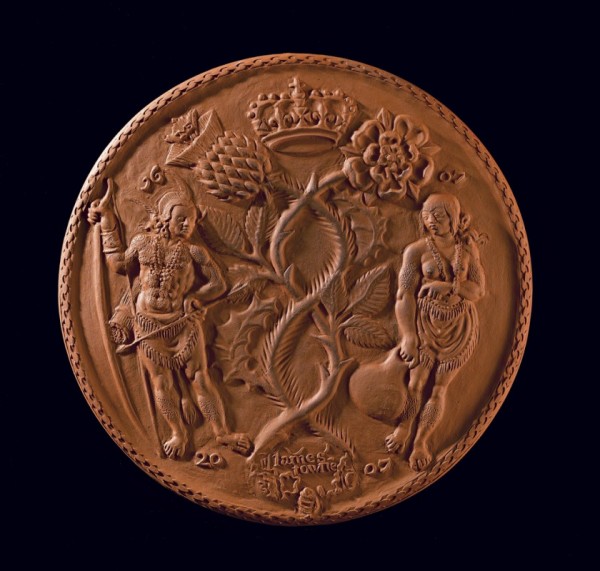
Medallion, Michelle Erickson, Virginia, 2007. Stoneware. D. 10 1/2". Shown here is the medallion after high-temperature firing.
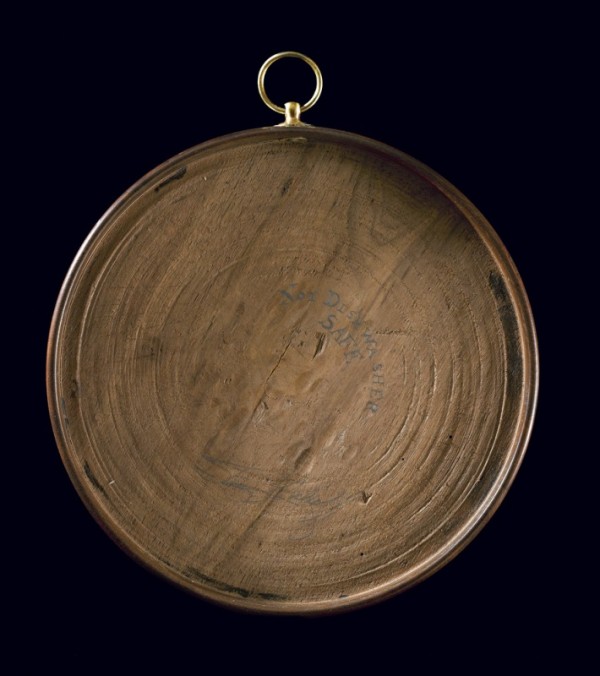
Frame, Steve Lalioff, Indiana. Walnut and brass. D. 11".
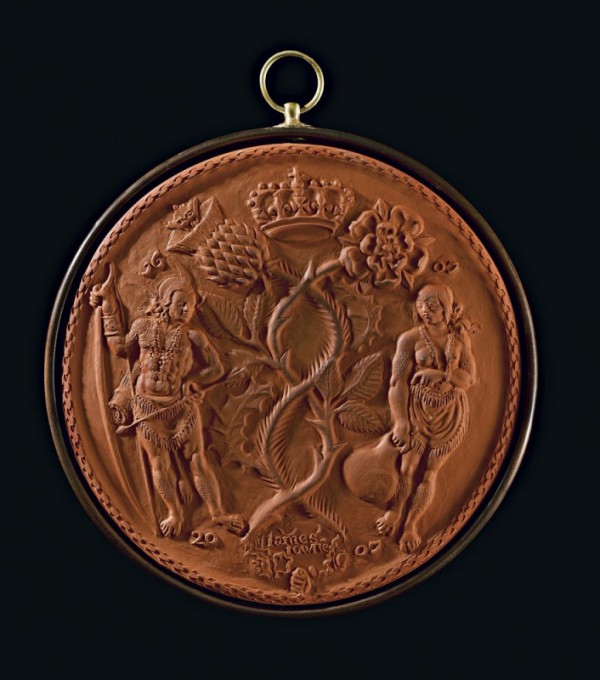
Framed medallion presented to Queen Elizabeth II on May 4, 2007.
